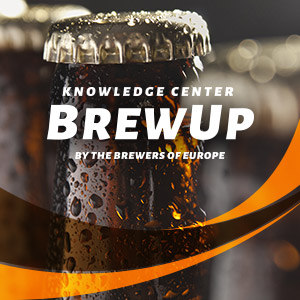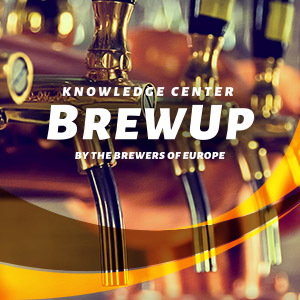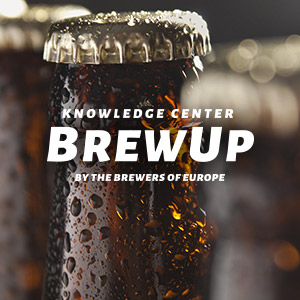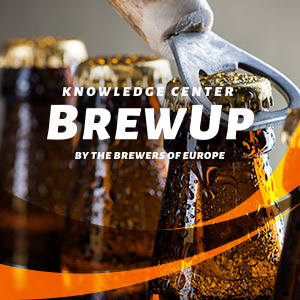
Contamination of Can Ends
The evaluation of the potential deleterious effect of can ends contamination on beer foam stability. Descriptors: Pass, Investigate, Fail.
It is necessary to use EBC Method 9.42
- 24/10/2018

The evaluation of the potential deleterious effect of can ends contamination on beer foam stability. Descriptors: Pass, Investigate, Fail.
It is necessary to use EBC Method 9.42

The determination of bottle seal integrity by gas or liquid loss, crimp tightness or torque, as a measure of any tendency for crowns or screw thread closures to loosen during storage or shipment. Values depend on bottle sealing surface and neck finish, threads finger tight, closure dimensions, finish and liner, strain release of neck or closure, top loading of bottles, product, length and conditions of storage. The report should include them all.

The method describes the procedure and criteria, which should be considered in the visual examination of bottles.
It is necessary to use EBC Method 11.1.1

A simple practical means of determining the dimensional tolerances of empty glass bottles. The tolerances will be negotiated in each case between the customer and the supplier. Guidelines for the tolerances are found in references 3.3 and 3.4. Dimensional tolerances are to be found in glass manufacturers’ guidelines.
It is necessary to use EBC Method 11.1.1

The determination of the filling level and the brimful capacities of all bottles. The difference between the brim and the filling height, the headspace, may then be calculated. The tolerances will be negotiated in each case between the customer and the supplier. Guidelines for the tolerances are found in reference 3.3. Capacity tolerances are also to be found in glass manufacturers’ guidelines. Descriptors: the density for water at the test temperature, volume at 20 ºC, volume as recorded, temperature as recorded.
It is necesssary to useEBC Method 11.1.1

This is to give guidance on the relationship between the internal pressure strength standards used for process control at the point of manufacture, and the pressure strength standards applicable at the point of receipt of the bottles by the bottler and in the case of refillable bottles, the pressure strength standards which might be applicable to the floats (parcs) of refillable bottles.
It is nessary to use EBC Method 11.1.1

A simple practical means of determining prescribed or agreed weight of empty glass bottles. Impurities of the glass mixture during manufacture have an influence on the empty weight of the glass bottles. Descriptors: independent measured value, number of measured values.
it is necessary to use EBC Method 11.1.1

The method describes the procedure and criteria which should be considered in the visual examination of can bodies. Descriptors: single sampling plans for normal inspection, Internal contamination, Slivers, Cracked flange, Clipped flange, Thumb print pleats, No internal spray/mis-spray, Litho inside, Pinholes, Incomplete flange, No litho, Damaged cans, Double pleats, Wrinkled flange, External contamination, Bar code, Malformed bottom, Ink splashes or spottings, Scratches, Single pleat.

The determination of the overflow capacity of empty cans. Descriptors: Correction factors for nominal content for temperature, density of water at test temperature, volume of water, temperature of water at dispensing, apparatus for determining overflow capacity of cans.

The determination of the headspace (freeboard) of a can at stated contents. Descriptors: Correction factors for nominal content for temperatures, volume of water at t temperature, volume of water at 20 °C (nominal content), temperature of water at dispensing, density of water at test temperature, headspace gauge, electronic headspace gauge.

The determination of the internal lacquer integrity of can bodies using a conductimetric enamel rater. The enamel rater will provide a rating of can quality in terms of metal exposures as well as providing a location of the exposure.

The determination of can seam dimensions using micrometers or visual projection techniques. Descriptors: Nominal seam thickness table, operating specifications, double seam, countersink depth, seam length, end hook length, overlap, seam thickness, body hook, seam gap, actual overlap, wrinkles rating, free space, end hook, body thickness, end thickness.

The determination of the internal volume of kegs and casks. Descriptors: Capacity litres, density of water, volume as recorded, temperature as recorded.

The determination of the lacquer integrity of crowns.
it is necessary to use EBC Method 11.17

The determination of the total (the dissolved and the headspace) content of oxygen in packaged beer, in bottle, can, keg and cask, by means of detecting oxygen ingress during packaging transfer and filling. Descriptors: headspace volume, net content, correlation between the oxygen content of a liquid phase and of a gas phase at equilibrium, temperature of the sample in degrees K, reading of the oxygen meter in mg/litre or ug/l, conversion of the headspace ratio.
It is necessary to use EBC Methods 9.37, 11.3.2, 11.3.1, 11.27, 11.14 and 11.18

The determination of differentiated total package oxygen in packaged beer. Descriptors: HSO (Headspace Oxygen), headspace pressure, headspace volume, TPO (Total Package Oxygen), DO (Dissolved Oxygen), beer

A biochemical assay for the presence or absence of the invertase enzyme as a measure of the effectiveness of pasteurisation, measured as pasteurisation units (PU). Other biochemical assays allow for quantitative measures of pasteurisation activity (see clause 9).

The detection of the phosphatase enzyme, present in alleged insect contaminants. The method is based upon the Aschaffenburg and Mullen test for phosphatase in milk.

The checking of one-way container (cans, non-returnable glass and PET bottles,…) clean efficiency by analysis of cleaned one-way containers, which have been deliberately contaminated.

The determination of sodium hydroxide and aluminates in packaging container (bottles, kegs, casks) washing solutions. A correction for the effect of residual carbonate is described.